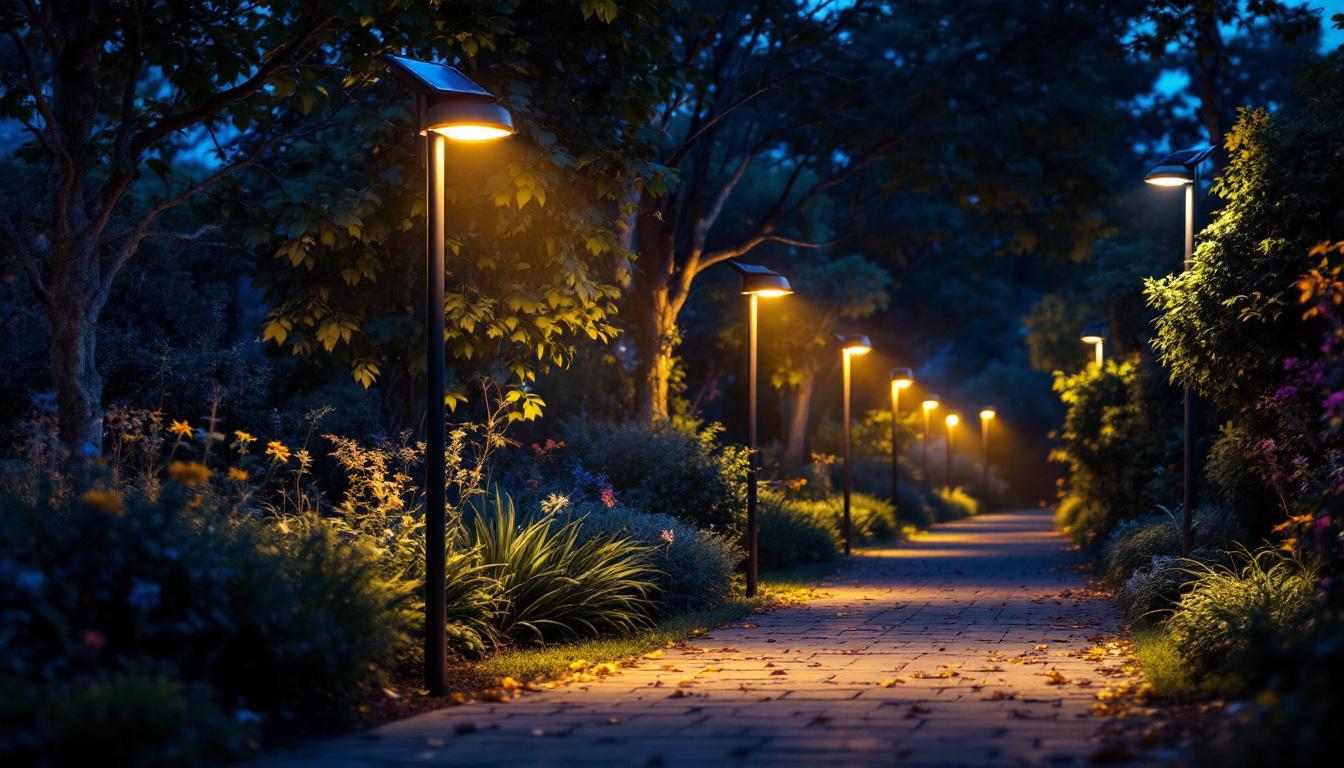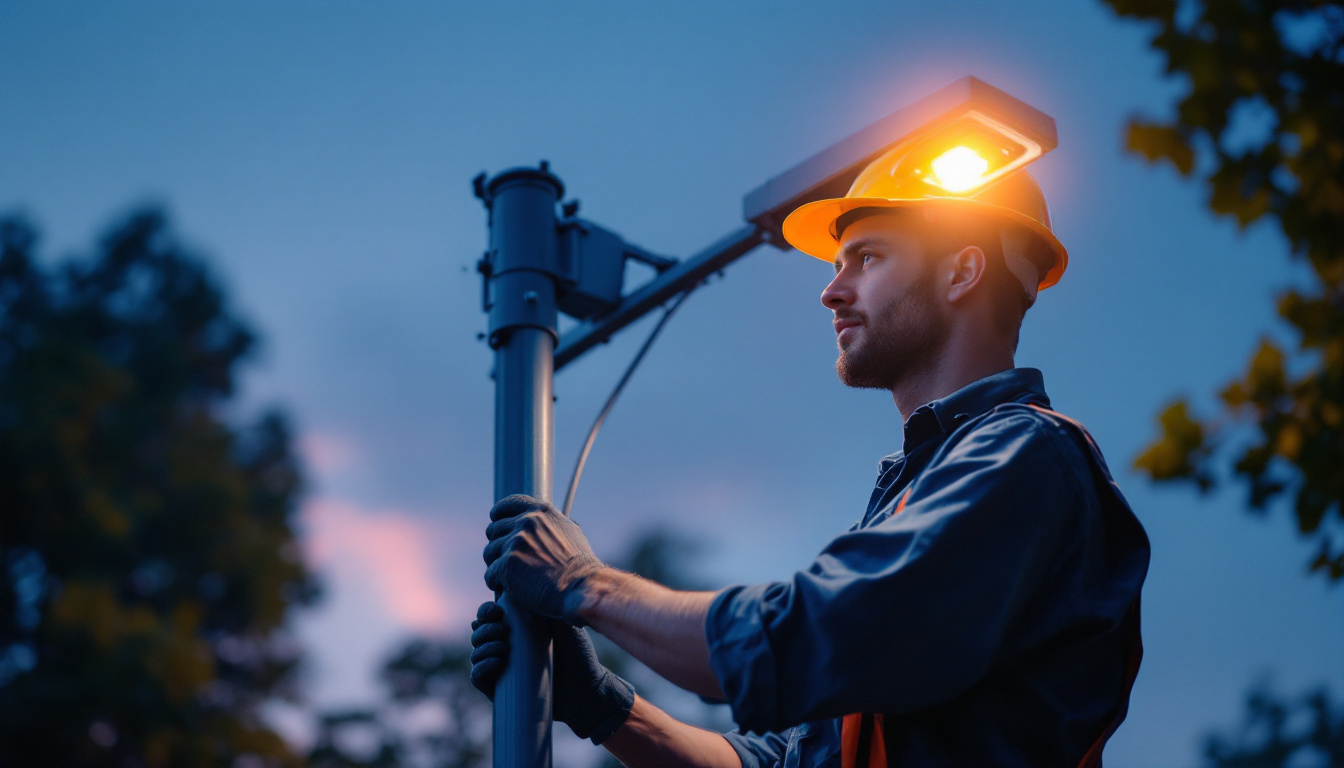
As the demand for sustainable and energy-efficient solutions in outdoor lighting continues to rise, solar-powered pole lights have emerged as a leading choice for lighting contractors. These fixtures not only reduce energy costs but also contribute to a greener environment. This article provides essential tips and insights for lighting contractors looking to master the art of installing and maintaining solar-powered pole lights outdoors.
Solar-powered pole lights are outdoor lighting solutions that harness solar energy to illuminate spaces. They typically consist of a solar panel, battery, LED light, and a pole for mounting. The solar panel collects sunlight during the day, converting it into electricity, which is then stored in the battery for use at night. This innovative technology not only provides illumination but also promotes energy independence and sustainability, making it a popular choice for both residential and commercial applications.
To effectively work with solar-powered pole lights, it is crucial to understand their main components:
Solar-powered pole lights offer numerous advantages that make them an attractive option for outdoor lighting projects:
Moreover, solar-powered pole lights are available in a variety of styles and designs, allowing them to blend seamlessly with different architectural aesthetics and landscaping themes. From sleek modern designs to more traditional lantern styles, there is a solar light to suit every preference. Additionally, many models now come equipped with smart technology, such as motion sensors and timers, which enhance their functionality and efficiency. These features not only provide added security but also ensure that the lights are only in use when needed, further conserving energy.
As the technology behind solar lighting continues to advance, we can expect even more innovative features and improved performance from solar-powered pole lights. With ongoing research and development, manufacturers are exploring ways to enhance battery life, increase solar panel efficiency, and integrate smart home capabilities, making these lights an even more compelling choice for the environmentally conscious consumer. The future of outdoor lighting is undoubtedly bright with the rise of solar-powered solutions.
When installing solar-powered pole lights, several factors must be taken into account to ensure optimal performance and longevity.
Conducting a thorough site assessment is essential before installation. Evaluate the following:
Selecting the right solar-powered pole lights is crucial for meeting project requirements. Consider the following factors:
Once the planning and selection stages are complete, the installation process can begin. Following a systematic approach will ensure a successful setup.
Before installation, gather all necessary tools and materials. This may include:
Follow these steps for a seamless installation:
To maximize the lifespan and performance of solar-powered pole lights, regular maintenance is essential. Here are some key maintenance tips:
Dust, dirt, and debris can accumulate on solar panels, reducing their efficiency. Regularly clean the panels with a soft cloth or sponge and mild soap to ensure optimal sunlight absorption.
Periodically inspect the battery for any signs of wear or degradation. Replacing batteries as needed will help maintain consistent performance. Choose high-quality batteries that are compatible with the solar light system.
Regularly check all components of the solar-powered pole lights, including the LED fixture, wiring, and mounting hardware. Tighten any loose connections and replace any damaged parts promptly to avoid further issues.
Lighting contractors may encounter several challenges when working with solar-powered pole lights. Understanding these challenges and their solutions can enhance project success.
If the solar lights are not providing adequate illumination, consider the following solutions:
Battery problems can lead to inconsistent performance. Address these issues by:
Extreme weather conditions can impact the performance and durability of solar lights. To mitigate these issues:
As technology advances, the future of solar-powered pole lights looks promising. Staying informed about emerging trends will help lighting contractors remain competitive.
Integrating smart technology into solar lighting systems is becoming increasingly popular. Features such as motion sensors, remote control, and smart scheduling can enhance functionality and energy efficiency.
Advancements in solar panel technology are leading to more efficient energy capture and storage solutions. This means longer-lasting illumination and better performance in less-than-ideal weather conditions.
Future installations may see solar-powered pole lights integrated with other renewable energy systems, such as wind turbines. This hybrid approach can provide a more reliable energy source, especially in areas with variable weather.
Solar-powered pole lights represent a significant advancement in outdoor lighting solutions, offering numerous benefits for both contractors and clients. By understanding the components, installation processes, maintenance needs, and emerging trends, lighting contractors can master the art of solar lighting. Embracing these technologies not only enhances project outcomes but also contributes to a more sustainable future.
As the industry continues to evolve, staying informed and adaptable will be key to success. With the right knowledge and skills, lighting contractors can confidently navigate the world of solar-powered pole lights and deliver exceptional results for their clients.
Ready to elevate your lighting projects with the most efficient solar-powered pole lights? At LumenWholesale, we provide lighting contractors like you with the highest quality, spec-grade lighting products at prices that can’t be beaten. Say goodbye to local distributor markups and hello to our extensive selection that meets rigorous industry standards. With free shipping on bulk orders, you can trust that you’re getting premium lighting solutions at the best value — no hidden fees, no compromises. Make your next project shine with the perfect combination of quality, affordability, and convenience. Wholesale Lighting at the Best Value is just a click away!

Discover the pitfalls lighting contractors often encounter when replacing LED lamps.

Discover the art and science behind decorative recessed lighting with insights tailored for lighting contractors.

Discover how under cabinet LED tape lighting is revolutionizing the work of lighting contractors by enhancing efficiency, reducing installation time, and providing versatile design options.

Discover how outdoor lighting poles are revolutionizing the efficiency of lighting contractors.